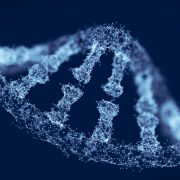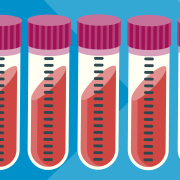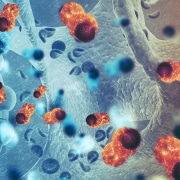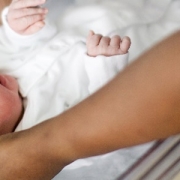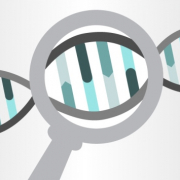NHS launches sight-saving NIPT test
A new genomic test can identify babies at risk of a rare form of eye cancer with almost 100% accuracy
A new, non-invasive prenatal test for retinoblastoma, a rare form of eye cancer, has been developed by the West Midlands Regional Genomics Service.
The test looks for a variant in the RB1 gene – known to cause 40% of retinoblastoma cases, and can predict whether the fetus carries it with near complete certainty.
Retinoblastoma
Retinoblastoma is the most common eye cancer in children, affecting around one in every 15,000 babies.
It begins during embryonic development when the eyes are being formed. The light-sensitive cells that make up the lining of the eyeball (the retina) multiply rapidly, and if some do not stop when the retina is complete, they can grow out of control, forming a tumour.
Cancer can develop in one eye or both: where both eyes are affected, a diagnosis is usually reached in the first year of life; when only one eye is affected, it is usually diagnosed when the child is between two and three years of age.
If untreated, the tumour can spread out of the eyeball and into the brain, making it much harder to treat, although most cases in the UK are caught before this happens. Most cases are not detected until the tumour has affected the child’s vision, however, and they may have to have the eye surgically removed.
The earlier treatment begins, the better the chance of saving a child’s sight, and potentially their life.
In the genome
The RB1 variant, known to cause 40% of cases, can be inherited from a parent or arise ‘de novo’ for the first time in an individual. Children with the RB1 gene variant are also more likely to develop cancer in both eyes.
Identifying the variant is possible, but challenging. A test is available for newborns in families with a history of retinoblastoma that can be performed on cord blood, but it can be difficult to return results in the tight timeframe necessary to start treatment. It can also be complicated for families who want to have a non-hospital birth.
Prenatal testing is also possible using chorionic villus sampling or amniocentesis, but due to the invasive nature of these tests, take-up is low.
Non-invasive prenatal diagnosis
The new test looks for the gene variant by sequencing cell-free fetal DNA found in the mother’s blood. As the test only requires a blood sample, it is non-invasive. Furthermore, it is extremely accurate and can be carried out earlier than existing tests, allowing treatment and management plans to be put into place quicker following a diagnosis.
Birmingham Women’s Hospital consultant clinical scientist Stephanie Allen explained that the test “will allow clinicians to manage, monitor and prepare treatments much earlier which can transform the prognosis for the baby”.
“It will also give the family certainty and allow them to prepare for the birth knowing the support the clinical team will give them,” she added.
The test is now being added to the NHS Genomic Medicine Service’s National Genomic Test Directory, which means it will be available across England for use in pregnancies where there is a family history of retinoblastoma. It is estimated that it will identify around 50 cases of retinoblastoma every year.
Birmingham Women’s and Children’s NHS Trust research scientist Dr Amy Gerrish, who led development, said the test could have even wider implications:
“The introduction of this technology of cell free DNA analysis will revolutionise the management of all aspects of retinoblastoma from early detection, selection of the best treatments, identification of family members at risk of retinoblastoma and early detection and treatment of associated adult-onset cancers.”
–



